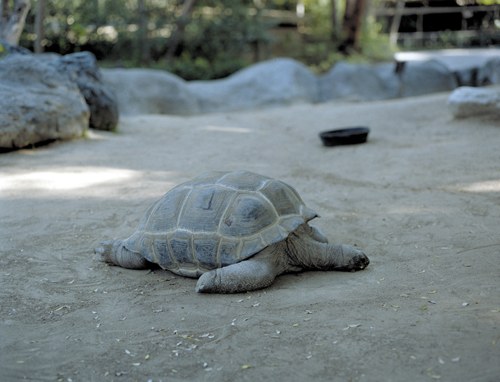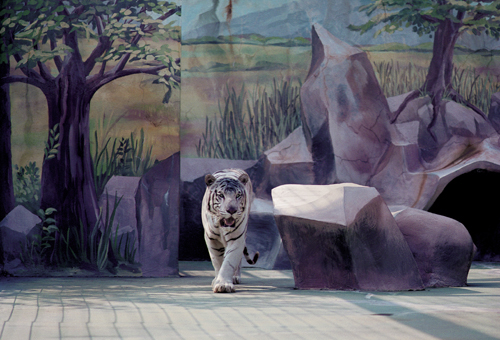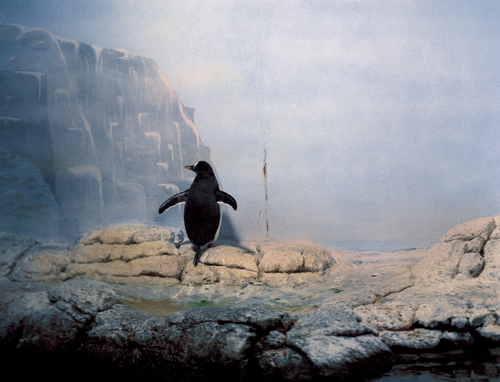
This Article From Issue
July-August 2004
Volume 92, Number 4
DOI: 10.1511/2004.48.0
Does a tiger appreciate the quality of a natural landscape painted on the back wall of its concrete and steel enclosure? Who really benefits from a penguin exhibit's unchanging sky? And what's a tortoise to do in the middle of Los Angeles?

From Captive Beauty.
Frank Noelker intentionally isolates his zoo animal subjects in the 50 contemplative photographs of Captive Beauty (University of Illinois Press, $50, cloth; $25, paper). Exhibit information, visitors and concession stands are blocked out. All we see is an animal (or two) in a sparse environment with little stimulation or interaction with its own kind.

From Captive Beauty.
The collection doesn't offer a complete picture of zoos, but it does zero in on the debate over their role as cultural institutions. Nigel Rothfels's fine introduction touches on conservation and education goals and notes recent comparisons of zoos to prisons and strip clubs. Captive Beauty may change what people see the next time they visit a zoo.

From Captive Beauty.
Proceeds from the sale of this book will go to the Jane Goodall Institute for Wildlife Research, Education, and Conservation.
American Scientist Comments and Discussion
To discuss our articles or comment on them, please share them and tag American Scientist on social media platforms. Here are links to our profiles on Twitter, Facebook, and LinkedIn.
If we re-share your post, we will moderate comments/discussion following our comments policy.